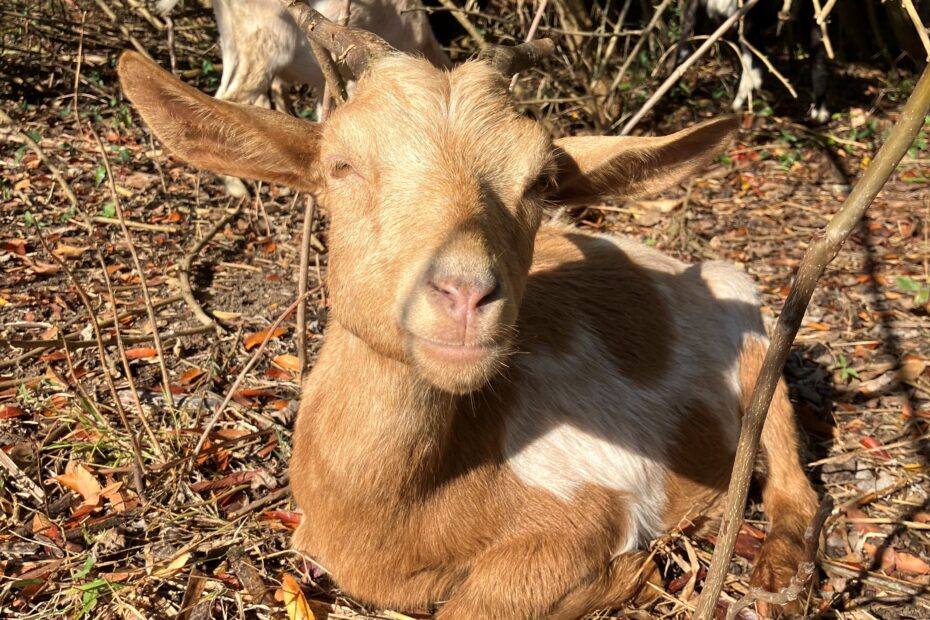One of the most difficult things in the goat business is the fall and winter. During that time of year, maintaining your herd can be both difficult and expensive. Most farmers resort to heavy doses of hay and grain to sustain their goats in these months, as that is the easiest way to keep weight on the goats. However, as I said, that gets expensive very quickly. Feed is $20+ per bag, square bales are between $5-10 per bale for anything even remotely good enough quality for goats, and round bales are easily $20+ per bale if you don’t have your hay fields. Even with your own fields, you might have to buy some. Goats, as any goat owner knows, go through everything SO quickly.
Even more so when you start getting significant numbers in your herd. I’m sitting at 23 goats at the time of writing, and go through minimum 2 square bales a day, alongside a bucket of grain or grower pellets depending on my herd goals for the season.
This past off-season taught me that I couldn’t keep up.
And so, this summer, I built more fence. 120 t-posts, 12 wooden posts, three gates, 400 fence clips, and 250 insulators later, I had three more acres of foliage for my goats.
I did this so that I could effectively adapt a rotational grazing plan into my fall, winter, and spring while the goats were all home.
Rotational grazing is exactly what it sounds like: You rotate the herd between 2+ lots to graze on. For me, I had the permanent fence from last year (about 1 acre), all of my temporary fencing that I use for the goatscaping jobs (fenced off about 2-2 1/2 acres), and the new permanent fence (3 acres). Combined, this leaves me with around 6 acres.
Each acre takes a pretty decent amount of time for the goats to clear, so as they begin wrapping up a section, I move them to the next before they really get the chance to finish it up. By doing this, you can get the absolute most out of your grazing lots, as every time they are on one lot, the other two get the chance to grow again.
Then you switch again. And again. And again as many times as needed.
But rotational grazing isn’t only great for feeding your herds. It’s also a great way to separate your buck(s). For me, I currently just have one buck. I don’t recommend having more than one at a time unless you want a terrible rutting season.
Anyways, with my buck, I keep two wethers and the one doe that I want for my buck to breed this season. He has already done his job, so I’m in the clear at this point. These four will stay together until close to her due date, but by having more than one lot, keeping them away from the others becomes significantly easier.
Another perk of rotational grazing is that, if rotated at a good timing, the goats are eating higher foliage rather than low weeds and low grass. They’ll still eat some, but goats are known to eat the highest things they can reach first and then work their way down. This lessens the likelihood of getting worms, as worms normally come from eating short grass and just eating plants that are lower to the ground in general.
Next year, I plan on building one more section of fence, and then the rotational grazing system I’ve developed should be close to flawless unless I introduce a new buck without selling my current buck.
Until then, time will tell. I will be writing a follow-up to this post as I roll back into the summer of 2024 and discussing the ins and outs of rotational grazing further and noting my experiences this year.



